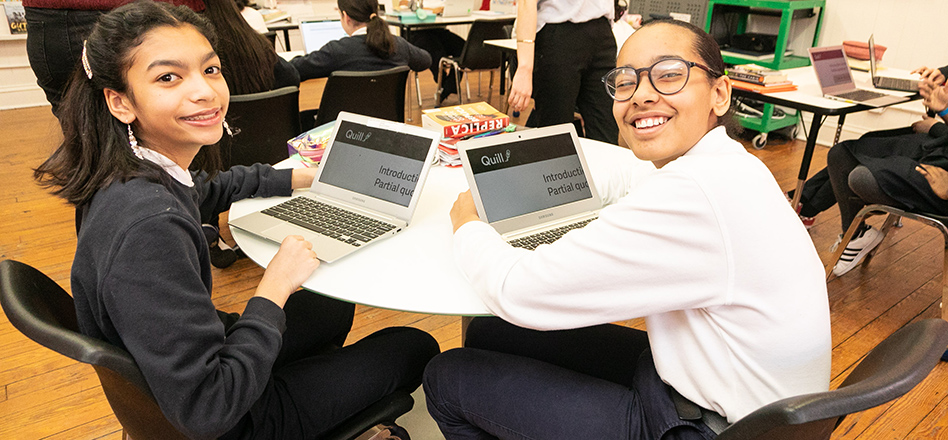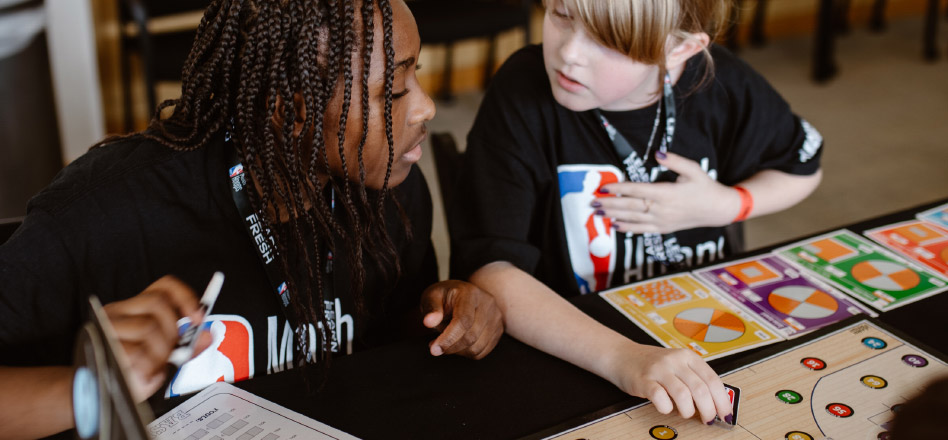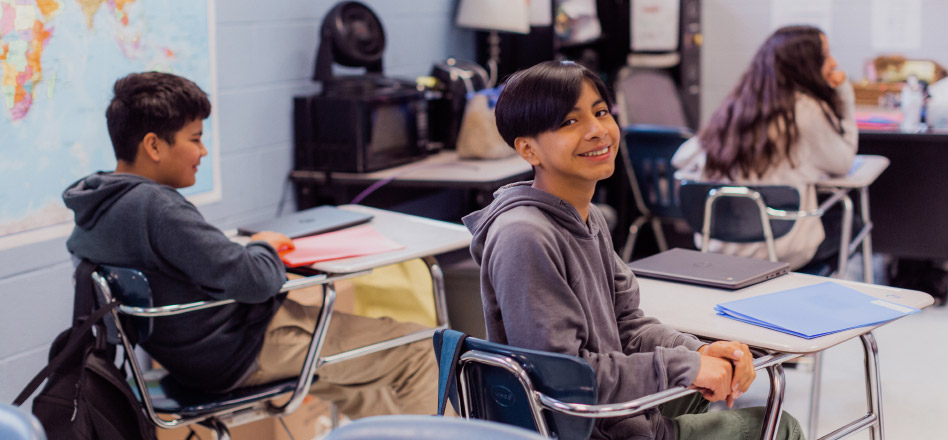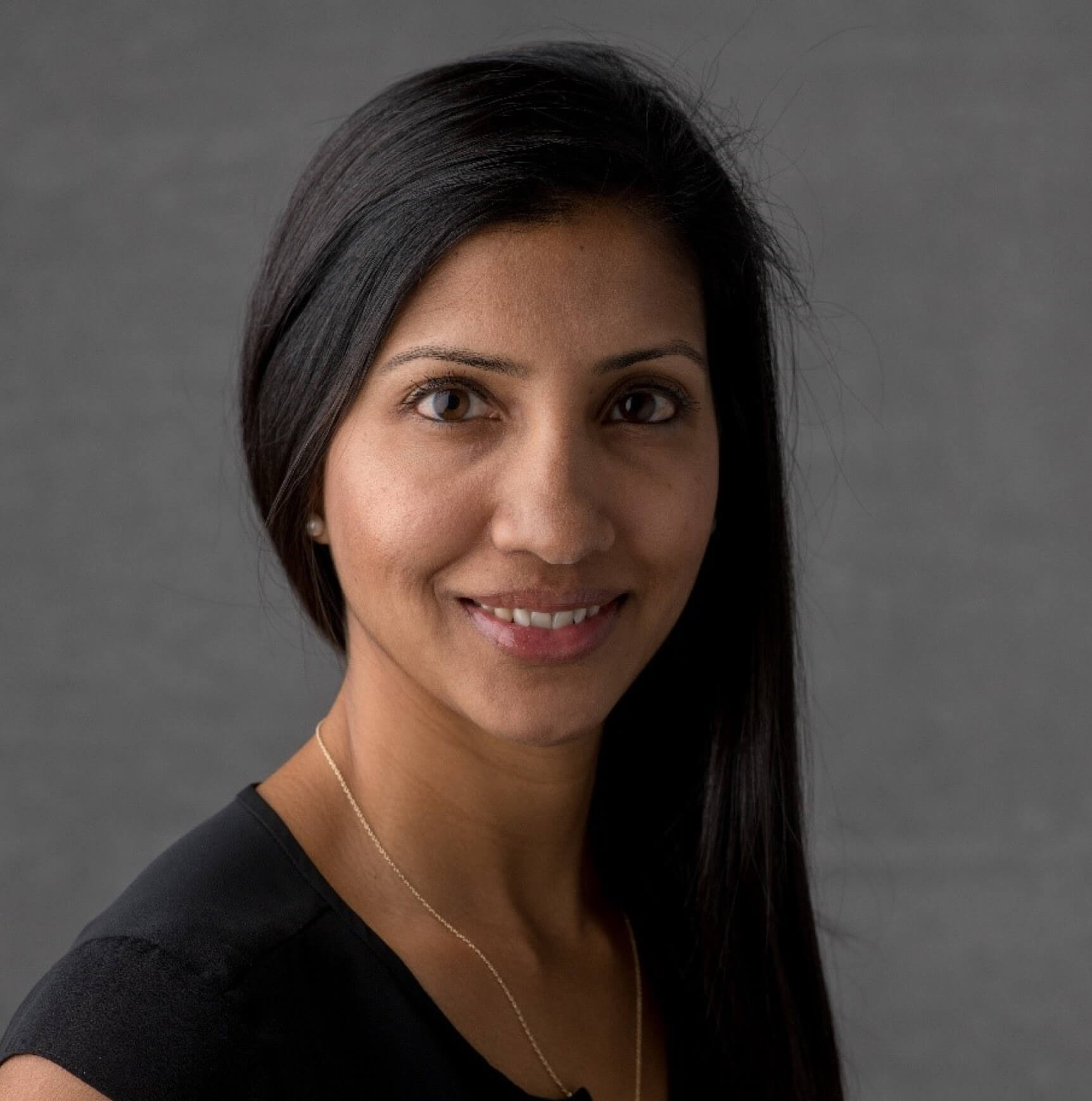Letter from Our Vice President
Friends and colleagues,
As I reflect on the past year, I’m filled with a sense of awe and pride both for the ingenuity and perseverance we saw in our grantee partners and our team’s continued commitment to supporting nonprofit organizations on their journeys of innovation, evidence, and growth.
This past year marked my tenth anniversary leading Overdeck Family Foundation. From day one, we’ve been guided by a shared mission—to open doors for every child in the U.S. by measurably enhancing education both inside and outside the classroom. We started by focusing on STEM opportunities, and in the years since, have expanded our scope to include additional areas across the education sector, from birth to ninth grade. I can hardly believe what we’ve accomplished in one decade as I’ve watched our grantmaking efforts help foster cross-sector collaboration, amplify educational opportunities, and drive improvement in academic and social-emotional outcomes for children across the country.
So, it’s with deep humility that I welcome you to our third annual Grantmaking & Impact Report, dedicated to highlighting what our grantmaking accomplished in the past year and uplifting the successes of the organizations we fund. As you explore the report, you’ll find insights into our impact and grantmaking data, stories from beneficiaries, and Bright Spots that detail how nonprofit leaders unlocked innovation, built evidence, and grew their organizations this past year.
The successes of our grantee partners are significant, and as I’ll detail later, there are invaluable lessons to be learned from their accomplishments, both for our team and the field at large. But as I look across the education landscape, it’s clear there’s more work to be done than what we can possibly do alone. That’s why, aligned to our core value of “learn better, together,” you’ll see a strong thread of collaboration in this letter, one that weaves itself through both our internal and external efforts.
There’s much to say about the education sector right now, but a few things stand out.

The Current State
First, too many children aren’t regularly coming to school, and we know that absent children cannot learn. Data show that nearly 30 percent of students were chronically absent during SY 2021-22, meaning they missed 10 percent or more of the year. Across our team, we’ve realized that it does not matter how effective an intervention is at improving outcomes if a child is not there to receive it.
Second, academic progress inside the classroom has stalled. 2022 PISA results reveal that, while science and reading scores in the U.S. held steady since 2018, students experienced a 13-point decline in math. Meanwhile, national achievement data have shown a failure to return to pre-pandemic performance, which was already far too low, and public schools reported that, on average, half of their students started SY 2022–23 behind grade level.
Third, addressing academic problems is made more difficult in the face of ongoing workforce challenges. Teacher retention continues to be complicated, especially for specialized roles, and staffing for early childhood, afterschool, and summer programs—which are crucial for setting children up for success—is inconsistent and fragile.

The Bright Side
None of these challenges can be tackled in isolation. Some of our biggest successes in 2023 resulted from collaboration between teams, philanthropies, and sectors.
Despite it not fitting neatly into our strategy areas, engaging families in their children’s education became a deeper focus for our team this year, especially in light of growing absenteeism and slowing academic progress. We partnered with the U.S. Department of Education and Carnegie Corporation of New York to launch a virtual learning series focused on uplifting evidence-based family engagement strategies that support student success, including attendance, starting in early childhood. More than 2,800 education leaders and practitioners joined these conversations throughout the six-month series, including leaders from some of the nation’s largest districts. We also worked with Learning Heroes to create a localized public awareness campaign, which aimed to increase caregiver understanding of how their child is doing in school and drive them to take action in support of their child’s academic progress. Early results are promising, and validate our hypothesis that building shared awareness of an issue can drive actionable change.
Declining math scores, as mentioned above, sparked renewed energy around the importance of STEM learning, both in and out of school, which we have long-prioritized as important. For example, Afterschool Alliance’s STEM policy cohort, which comprises 13 states, generated $143 million in new funding for afterschool and summer programs that support STEM learning, increasing access to in-demand programs for families and children across the country. And grantee organizations that focus on increasing students’ STEM engagement and identity through rigorous and joyful learning, including DiscoverE’s Future City, FIRST®, and Learn Fresh, grew year over year by 94, 34, and 24 percent respectively, demonstrating increased demand for these programs. One of the key predictors of growth was partnership between in- and out-of-school learning, and we’re optimistic that there will be increased opportunities to strengthen these connections and increase the joy of STEM learning in the years ahead.
Core to accelerating students’ academic progress and supporting their social-emotional needs is high-impact tutoring, which has grown its evidence base and scalability potential thanks to work by the National Student Support Accelerator and Accelerate’s States Leading Recovery program. As one of the earliest funders of Saga Education, a leading provider of high-impact tutoring, we continue to believe that this type of intervention is one of the most impactful ways to accelerate student learning. But given the aforementioned workforce challenges and the budget constraints of most districts, scaling traditional high-impact tutoring models has historically been elusive. Over the past several years, many of our grantees, including Saga, have incorporated technology into their programs, driving down the cost of tutoring without sacrificing impact. Most recently, a randomized controlled trial of grantee OnYourMark’s virtual early literacy tutoring program showed positive impacts on kindergarteners’ knowledge of letter sounds and first graders’ decoding skills. The partnering of technology with an intervention long-supported by evidence is promising and I’m hopeful that this evolution will allow better and faster academic recovery for all students who need it.
We’ve long opined on the lack of evidence-based decision-making at the school and district level. Our hypothesis has been that low-quality materials and associated professional development not only hurt students, but prevent educators from being as effective as they could be, leading to less professional satisfaction and higher turnover. In 2023, after years of advocacy and public awareness by field leaders, we began to see the tide turn, with more districts, cities, and states embracing science of reading-based literacy curricula that show evidence of improving student outcomes and the educator experience. In the years ahead, grantees Teaching Lab and Leading Educators will provide curriculum-aligned professional learning to over 1,400 teachers reaching 58,000 students as part of an initiative to bring the science of reading to all public school students in New York City. And, after over 10 years of operation, our grantee EdReports, which supports districts and states in selecting high-quality instructional materials, reached 3.2 million unique website visitors in the past year, a reported 45 percent year-over-year increase, demonstrating increased demand for its resources.
Our Impact in 2023
Collaboration between our team, grantees, and the sector was critical to our success in 2023. Throughout the year, we disbursed $53.5 million to almost 100 grantee partners, collectively reaching over 66 million children nationwide. Key achievements of this funding included:
- 15 early stage organizations funded and 26 prototypes developed, continuing to drive the sector in innovation for both delivery channels and programmatic design;
- 36 validation and research studies completed;
- Two grantees increased Every Student Succeeds Act (ESSA) tiers, with 11 meeting Tier 1 and Tier 2 evidence standards;
- 31 grantees increased reach and 22 increased earned revenue year-over-year, often by prioritizing the implementation of technology to lower costs, improve scalability, and maintain impact;
- Grantees strengthened 31 organizational skills with capacity building provided by the Foundation, which included support for communications, impact evaluation, financial planning, leadership development, and strategic growth; and
- Over $67 million in public and private funding attracted by grantees with support from the Foundation.
This year, we once again partnered with the Center for Effective Philanthropy (CEP) to gather anonymous insights in a Grantee Perception Report, which helped us understand where our grantees think we are strong, and where we need to improve. On our blog, we detail how we did against previous commitments, with several takeaways that are guiding 2024 planning. Notably, grantees recognized our impact in the field and our efforts to generate and disseminate knowledge, rating us in the 70th and 86th percentile, respectively. We also received high scores for our impact on grantee organizations, especially from Direct Impact grantees. Lastly, we saw improvements in our grant reporting process ratings, and received our highest-ever rating for communicating our goals and strategies.

Opportunities for 2024
The Foundation had an incredibly strong year, but we still missed some of the ambitious goals that we set for ourselves.
1. Deepening trust, support, and impact with grantees. Our 2023 CEP results, while overall positive, showed us that more work is needed to improve our grantee relationships, particularly in the area of trust. Grantees reported feeling significantly more pressure to alter their goals to receive funding from the Foundation and we received lower-than-typical ratings about comfort approaching the Foundation should a problem arise. Trusting relationships with grantee partners are a key component to impact, so this is something we will directly seek to address by increasing the amount of time our team spends with grantees.
2. Funding new Direct Impact organizations. In 2023, we were only able to fund six new Direct Impact organizations, against a more ambitious goal. Funding new organizations is a critical element of our venture-inspired funding model, which is designed to prioritize funding at junctures where the Foundation can be most impactful and catalytic. It’s also a key component of driving innovation in the sector. For 2024, we’re putting several tactics into place to enhance how we find and fund new organizations. For example, we’re redesigning our pipeline process, rethinking how we fund pilot grants, and developing funding strategies with pipelines in mind, allowing us to operate at the nexus of what the sector needs and what’s available.
3. Growing our research capabilities. Last year, we launched one research study and no validations, against a goal of five and three, respectively. Given that our Foundation has a unique proposition of unlocking evidence for nonprofits that hope to scale as a way to promote evidence-based decision-making, our failure to meet our aspirations has implications for both the nonprofits we fund and the sector at large. We take this seriously and are excited to meet our ambitions in 2024 through a newly staffed research arm at the Foundation, which will prioritize working with grantees who would benefit from validations, as well as commissioning research that fills important knowledge gaps in the sector.
Our Foundation has important work ahead of us to address these key areas and uphold our commitments to our grantees, ourselves, and the sector. I believe that leveraging both our direct impact and ecosystem grantmaking in addition to continued and strengthened collaboration across our team and stakeholders will be critical to catalyzing our impact for the long term. I look forward to sharing what we learn along the way.
As always, but especially now, as I reflect on all the Foundation has accomplished in the past year and decade, I want to thank my team for always showing up for each other and our grantees, for being unafraid to ask the tough questions, and for bringing us closer to fulfilling our goal of providing all children the opportunity to unlock their potential. Thank you also to our grantees who bring this work to life and inspire us with their limitless efforts to improve the educational experience for children across the country. And thank you to the Foundation’s leadership for their unwavering belief in our mission and support of this work.
Sincerely,
